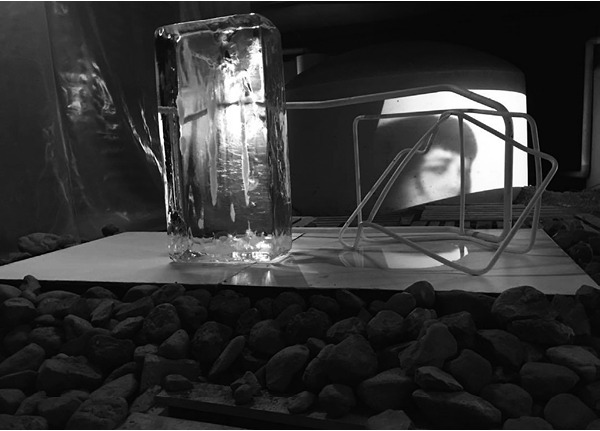
LUNG WATER
first performed on October 12, 2018
Backbone Arts “How Soon Is Now Festival,” Meanjin (Brisbane), Australia
performed once in 2018
RUBY DONOHOE
New York, NY / Australia
973668800r973668800u973668800b973668800y973668800.973668800d973668800o973668800n973668800o973668800h973668800o973668800e973668800@973668800g973668800m973668800a973668800i973668800l973668800.973668800c973668800o973668800m
LUNG WATER
RUBY DONOHOE
“Lung Water” was a performance installation comprised of a time-based ice sculpture, short films of bodily estrangement performed for camera, and a sea of imbalanced construction pallets lining the floor which audiences had to navigate as they travelled through the space. It was performed in Meanjin (Brisbane), Australia—whose traditional owners I’d like to acknowledge as the Turrbal People. The performance space was under a Queenslander-style, old bowls club—an architectural design characterized by vertical stilts beneath the building which creates a cavernous space beneath the main structure allowing it to “float” above the terrain and built to cope with Queensland’s iconic subtropical flooding. “Lung Water” incorporated two abandoned industrial-sized water tanks installed at the site in the early 1980s that were connected via pipework and were reminiscent of lungs. Another site-specific feature included more than 80 stones collected from the East Brisbane river area which defend against moving water along the riverbank and give natural protection against erosion. These stones were used to mount the ice sculpture and were replaced back into the landscape at the conclusion of the performance.
The ice sculpture weighed 130 kg, took five days to produce, melted in 38 hours, and was interwoven between two found metal supports from poolside chaise lounges. These structures had a history of holding bodies, and during the performance water moved through them.
That weekend it rained. The ice fell over due to tropical early summer wind. It began to melt unevenly as winds and humidity began to re-mold and imprint the disappearing sculpture. Audiences came and went.
“Lung Water” was a torrential prayer to slow atrophy, an ode to temporary forms, and an exploration of containers as porous structures for holding exquisite moments of rapid change. Inspired by Anne Carson’s “Kinds of water drown us. Kinds of water do not.” in her book Plainwater: Essays and Poetry, “Lung Water” explored the in-breath as a case study for the simultaneous beauty and rage of entanglement, and our competing desires to be both one with our environment and extricate ourselves from it. Through a discourse of motion sickness, “Lung Water” looked at the simultaneous intimacy and radical alienation we experience with the personal body as a hinge in unpacking our conceptions of “other” and as a parallel phenomenon to how we relate to existing on planetary bodies of land and water.